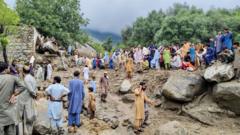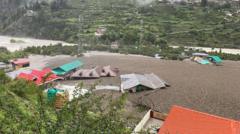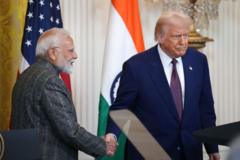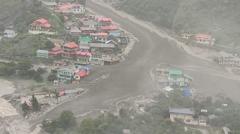Analyzing the rise in violence as both countries respond to provocations, revealing a complex web of military maneuvers and disinformation.
**Escalation in India-Pakistan Tensions: What We Know So Far**

**Escalation in India-Pakistan Tensions: What We Know So Far**
A deeper look into the recent clashes that brought India and Pakistan close to conflict.
In the latest unfolding of the long-standing India-Pakistan conflict, tensions have reached alarming heights following a terrorist attack in Indian-administered Kashmir on April 22. India accused Pakistan of harboring terrorist groups and launched a military response that led to unprecedented clashes between the two nations over four tumultuous nights.
The conflict ignited with India’s airstrikes that targeted key locations deep within Pakistani territory, marking the most aggressive military engagement between the two countries in decades. However, these strikes did not proceed as planned; instead, they devolved into a chaotic series of aerial dogfights involving both nations’ air forces. India reportedly lost several advanced fighter jets during these confrontations, underscoring the precarious nature of the situation.
As the clashes intensified, diplomatic efforts were made to defuse the escalating violence. On the second day, India claimed to have thwarted a Pakistani military offensive aimed at its border cities, leading to further escalation. Indian forces responded by targeting sensitive military infrastructure in major urban centers, including Lahore, emphasizing the gravity of the exchanges.
The overall impact and damages on both sides remain difficult to assess amid media blackouts and disinformation campaigns. As both nations grapple with the consequences of these latest hostilities, the potential for future conflict looms larger than ever, leaving the region on edge.
The conflict ignited with India’s airstrikes that targeted key locations deep within Pakistani territory, marking the most aggressive military engagement between the two countries in decades. However, these strikes did not proceed as planned; instead, they devolved into a chaotic series of aerial dogfights involving both nations’ air forces. India reportedly lost several advanced fighter jets during these confrontations, underscoring the precarious nature of the situation.
As the clashes intensified, diplomatic efforts were made to defuse the escalating violence. On the second day, India claimed to have thwarted a Pakistani military offensive aimed at its border cities, leading to further escalation. Indian forces responded by targeting sensitive military infrastructure in major urban centers, including Lahore, emphasizing the gravity of the exchanges.
The overall impact and damages on both sides remain difficult to assess amid media blackouts and disinformation campaigns. As both nations grapple with the consequences of these latest hostilities, the potential for future conflict looms larger than ever, leaving the region on edge.























